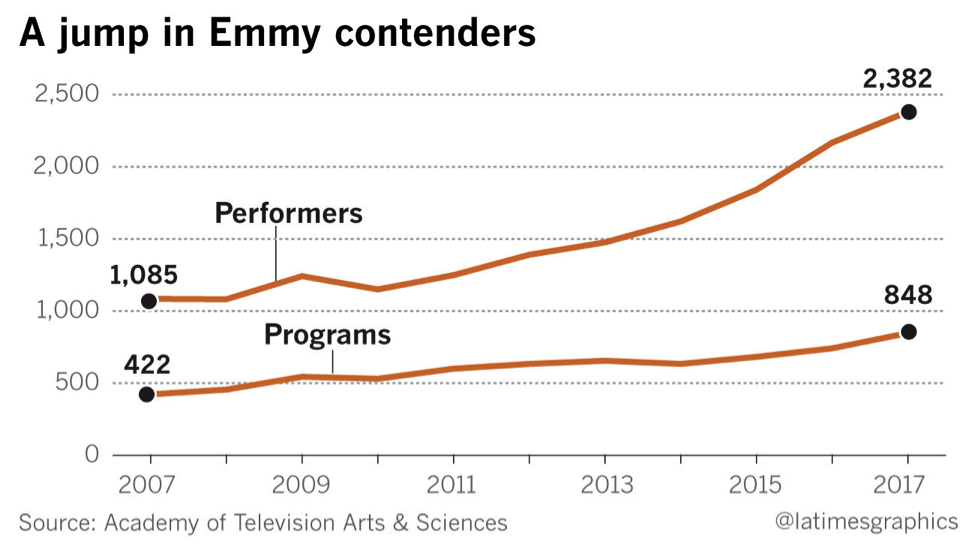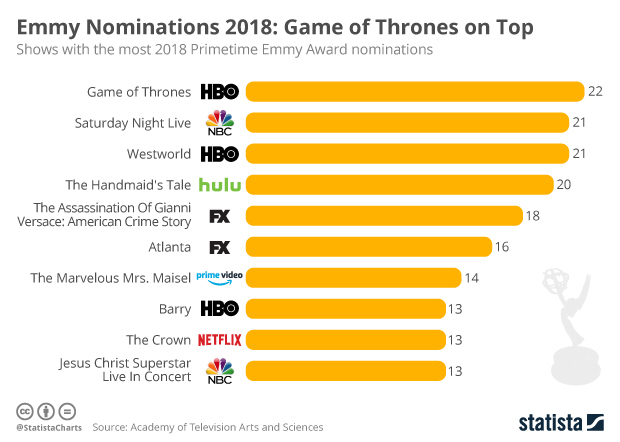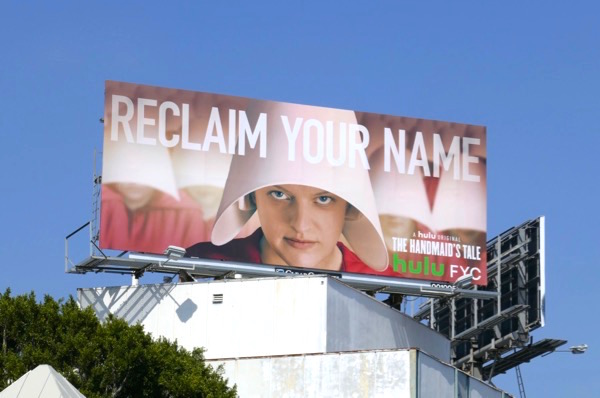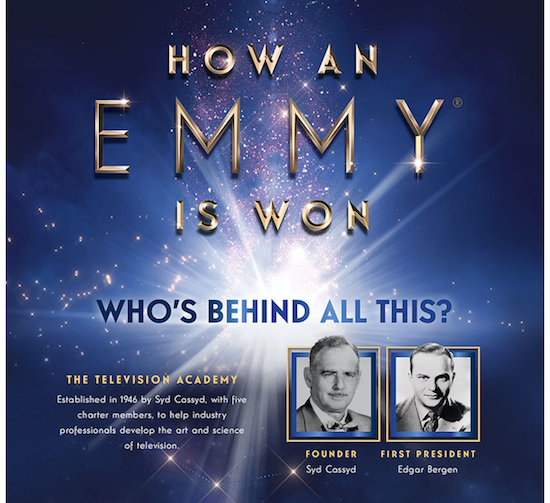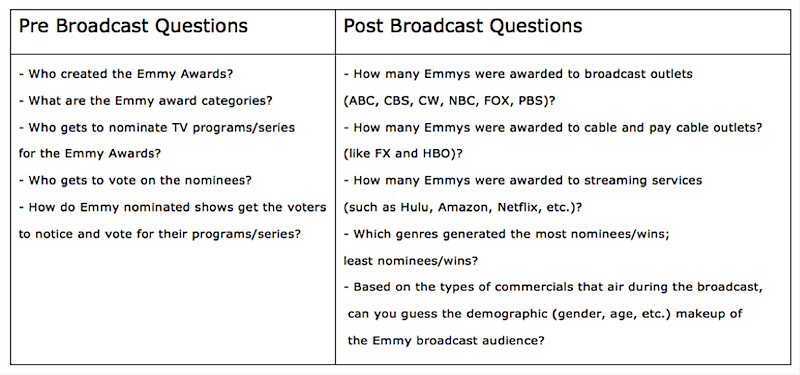Use the Emmy Awards as a Versatile Teaching Tool
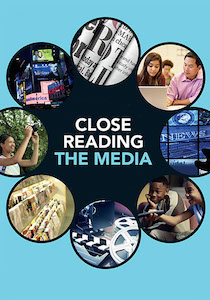 Does television still matter? You bet it does! Millions of eyeballs and dollars are at stake.
Does television still matter? You bet it does! Millions of eyeballs and dollars are at stake.
Many of us, and our students, still follow television programs and series, whether they’re broadcast on TV, cable, or streamed via the internet on any of the dozens of established and emerging entertainment services.
The fall network TV season was announced in May and will begin for the most part in September. But do we really even have TV seasons anymore?
Cable channels may start new series and continue old ones anytime during the year. And the streaming services, increasingly, just drop an entire season onto their platforms at once (with great or little fanfare) allowing us to set our own viewing pace – or to binge-watch every episode in a weekend of epic video consumption.
Whatever we might say about TV seasons, summer is definitely part of the Emmys season, as the television industry launches a multi-month promotion of the annual Emmy Awards, recognizing the best programming from the previous year. This year, the awards telecast will be broadcast LIVE on the NBC-TV Network at 8pm ET, Monday, September 17.
The Emmys provide educators with yet another teachable moment and opportunity to engage students in those shows they watch and discuss. The broadcast is another one of those pop culture events (like the Super Bowl and the Academy Awards) that generate lots of buzz and have implications both outside and inside the classroom.
Emmys and the Evolution of Television
Today, there are more programs eligible for Emmy awards than any other time in the past. Some critics maintain we are in the midst of the “Second Golden Age of Television” – referencing the quality of material airing today. (The first Golden Age of TV occurred between the late 1940s and the early 1960s.)
Many attribute this second golden age to the eagerness of cable channels and the new streaming platforms to establish blockbuster “signature” programs that establish or restore their brands as leading entertainment resources.
Almost-forgotten cable channels, reduced to running endless repetitions of popular network shows from decades past, are now reviving themselves with original series praised by critics. And, in an effort to capitalize on the streaming phenomenon birthed by Netflix, me-too channels like Hulu, Prime Video, and other up-and-comers are collectively producing original quality content at a bewildering rate.
Original content drives people to pay streaming video services, while the rest of the stuff in the library keeps people around.” — David Marino-Nachison in an article at Barron’s Next.
As a result, since 2007 the number of programs under consideration for Emmy Awards has more than doubled (even as the number of episodes in a season has shrunk). In 2017, a record 487 original scripted series were in contention; a 125% increase since 2012.
In 2017, the traditional broadcast networks (ABC, CBS, NBC and PBS) were again overshadowed by the number of Emmys won by cable TV and those new streaming kids on the block, like Hulu, Netflix and Amazon. (HBO took home 29 wins to Netflix’s 20; Hulu won 10. Meanwhile NBC took home 15, ABC 7, FOX 5, CBS 4 ).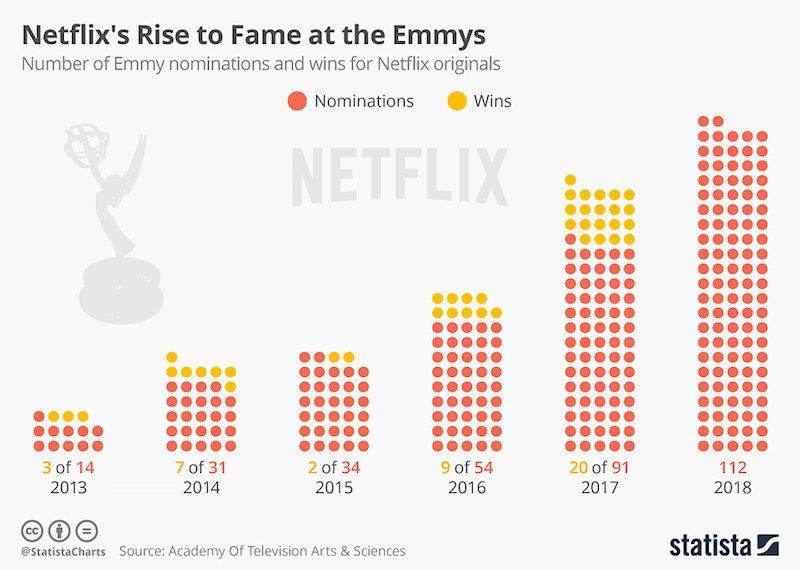
The big news so far in the 2018 Emmys race: In the nominations announced in July, Netflix knocked HBO from its long-held top perch with 112 total nominations (across all catgories). HBO was next with 108; NBC (78); FX (50); CBS (34); ABC (31); Hulu (27); Amazon Prime Video (22); FOX (16); Showtime (15) and PBS (9).
Although HBO continued to dominate for single-show nominations this year – with 22 for Game of Thrones – Vanity Fair notes that “Netflix pushed its way to the top of the [total] nominations tally by sheer volume. It has so many shows and so much talent that it can’t help but swarm the list with such programming as Stranger Things, GLOW, Black Mirror, Queer Eye, Seven Seconds, and Wild Wild Country.”
Other single-show standouts have won in previous years: Saturday Night Live (NBC) and Westworld (HBO) each had 21, The Handmaid’s Tale (HULU) 20. In comedy, Atlanta (FX) led with 16. But the next two spots went to first-year series: The Marvelous Mrs. Maisel (Amazon) with 14 and Barry (HBO) right behind at 13.
Will the 2018 Emmy Award voters again prefer the streaming series? Will the TV networks see their share of Emmy Awards continue to dwindle? These are great questions to pursue with students, not only in the context of media literacy but as fodder for close reading activities, argumentative writing assignments, cultural history lessons, and more.
The Emmys Frenzy
With the competition greater and the stakes higher than ever, for the past several months the Emmy fanfare and the campaigning have reached epic proportions. In an effort to sway decisions, studios sent DVD packages to eligible voters and sponsored lavish parties. USA Today recently reported on the lengths that production studios and stars are going through in order to get recognized.
A Deadline Hollywood columnist also observed: “The (publicity) campaign is as important as getting the award itself.” Emmy hopefuls, eager to call attention to themselves, have been featured in multi-page ads in trade publications such as The Hollywood Reporter, VARIETY, and EMMY. (These “For Your Consideration” ads also showed up in daily newspapers and on billboards in and around Los Angeles and New York City, where most of the voters reside.)
I’ve created a special web page where your students can study and/or analyze many of these ads.
Who Are The Emmy Voters?
The Emmys, awarded by the Academy of Television Arts & Sciences, honor those who work in front of and behind the camera. The Academy, with more than 20,000 members, is divided into 28 peer groups of specialized fields. The members of each peer group vote on the nominees and winners for categories pertaining to their area of specialty. (Source)
A separate awards ceremony, the Creative Arts Emmy Awards, will honor the crafts people—those who work behind the scenes in production. The winners of Creative Arts Awards will be announced September 16.
Students will find this How An Emmy Is Won” infographic easy to follow. Also see these resources: Emmy Nominations and Interesting Facts about the Emmys. And for even deeper diving, these press fact sheets for 2018.
Connecting TV to Teaching Standards
Studying television in the middle grades might seem inappropriate or frivolous. However, many ELA and social studies teachers know that when they take the time to engage students with popular culture texts, they’re really meeting students where they are.
We know students watch television and discuss favorite plots, stars and genres. In their book Falling in Love with Close Reading, authors Christopher Lehman and Kate Roberts recommend engaging students by having them compare some of the situation comedies they might be fond of watching. (This Read/Write/Think lesson plan is somewhat dated, but you’ll find ideas on studying TV in the middle grades.)
The Common Core ELA standards for middle grades specifically reference the importance of teaching students to understand media technique, connections to original texts, and choices made in production:
► 7th grade: Compare and contrast a written story, drama, or poem to its audio, filmed, staged, or multimedia version, analyzing the effects of techniques unique to each medium (e.g., lighting, sound, color, or camera focus and angles in a film).
► 8th grade: Analyze the extent to which a filmed or live production of a story or drama stays faithful to or departs from the text or script, evaluating the choices made by the director or actors.
See an example of comparing different versions of Horton Foote’s play “A Trip to Bountiful” in this article I wrote in 2014 about the Emmy Awards. The ability to compare print and non-print forms of something requires students to have a similar understanding of each medium’s key elements.
The nominated programs fall into one of many popular genres and sub-genres. In classrooms today students study genre and the formulas that comprise them. Popular TV genres include sit-coms, drama (police, legal, medical), action/adventure, sci-fi, animated, reality, game and comedy. Students could explore why they gravitate to certain genres and why they are appealing. (The Television Genre Book may offer you some solid suggestions on how to teach them.)
Lesson/Activity Suggestion
Let’s say your students are fans of Netflix’s Stranger Things which has been categorized as science/horror/supernatural fiction, and period drama. It competes in the Emmys’ drama category. Have your students investigate which other dramas are in competition with Stranger Things.
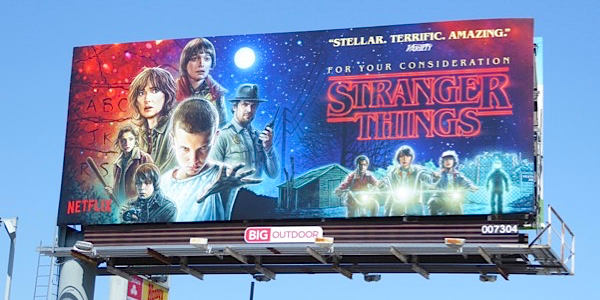
What similarities and differences do they see? What books or movies come to mind? You might task your students with conducting a “Who Should Win the Emmy” poll with other students at school and another with adults. Perhaps include both drama and comedy series. Have them present their poll findings. Did the students and adults agree on which series deserve Emmy awards?
Some intense discussion continues around race and Hollywood awards. Students might search Google Images for charts sharing data about representation. Here’s an example from Medium, part of a story on 2018 Emmy diversity:
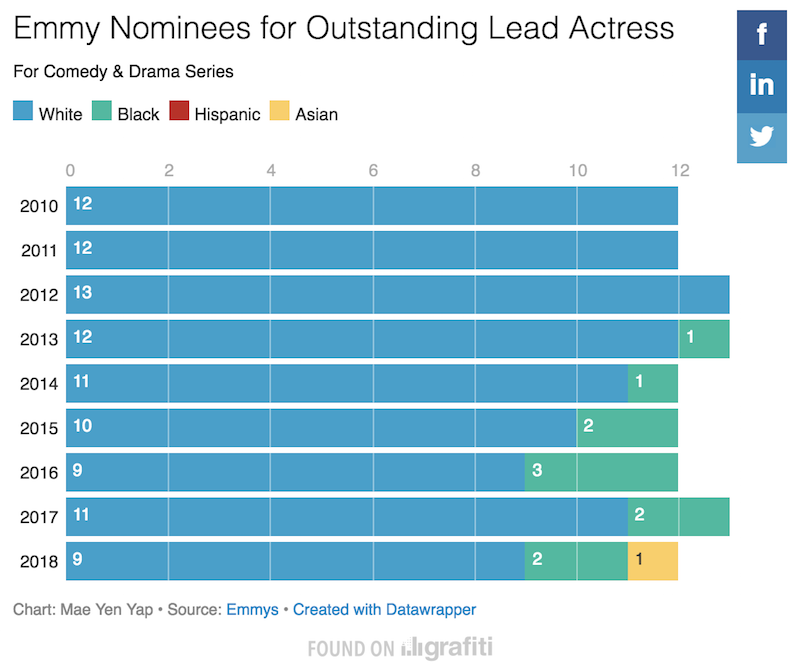
The number of black actresses nominated as lead actress for a comedy or drama series had not changed much during the last decade.
Finally, teachers might want to apply some typical media literacy questions to the Emmy Awards. The following questions are suggestions to jump start your students’ critical thinking skills:
More Recommended Resources
► Infographic: How An Emmy Is Won
► Mourning the Lost Long TV Season
► 7 Ways Technology Has Changed Television
► Streaming TV Isn’t Just a New Way to Watch – It’s a New Genre (New York Times)
► Archive of American Television (streaming interviews and more)
► Genre Studies In Mass Media – A Handbook (by Art Silverblatt)
► The Whole Crazy Process of Creating A TV Show – From Pitch to Pilot (at Gizmodo)
________________________
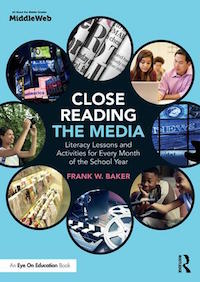 Frank Baker’s new book Close Reading the Media is designed to help teachers better understand how to engage students in the close reading of media messages. MiddleWeb readers can receive a 20% discount at the Routledge site with code MWEB1.
Frank Baker’s new book Close Reading the Media is designed to help teachers better understand how to engage students in the close reading of media messages. MiddleWeb readers can receive a 20% discount at the Routledge site with code MWEB1.
Baker maintains the Media Literacy Clearinghouse (www.frankwbaker.com) named as one of the Top Free Best 100 Web Sites of 2017.

